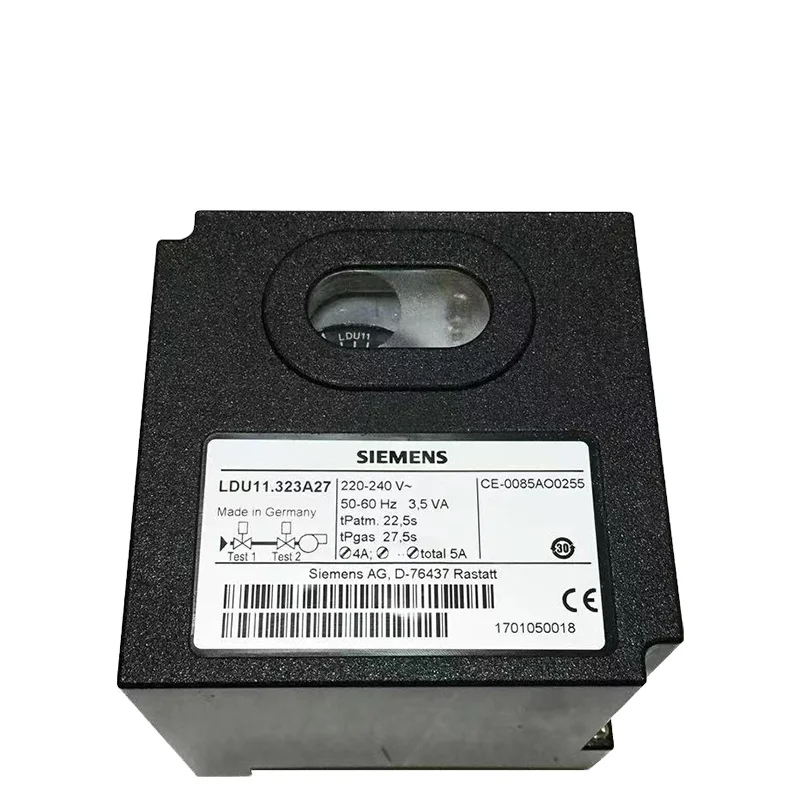burner startup - during the prepurge time if it lasts a minimum of 60 seconds - immediately after a controlled shutdown, or - on
completion of the burner control’s control sequence, e.g. at the end of the postpurge time The valve proving test is based on the 2-stage pressure proving principle: 1. The valve on the mains side is tested by evacuating the test space and by monitoring the atmospheric pressure in it. 2. The valve on the burner side is checked by pressurizing the test space and by monitoring the gas pressure. If the pressure increases excessively during the first test phase called «Test1», or decreases excessively during the second test phase called «Test2», the LDU11.... will inhibit burner startup and initiate lockout. In that case, the lockout reset
button will light up to indicate the fault. Remote indication of the fault is also possible. A program indicator, which stops whenever a fault occurs, indicates which of the valves is leaking. The LDU11... can be reset either on the unit itself or via an electric remote reset facility.
completion of the burner control’s control sequence, e.g. at the end of the postpurge time The valve proving test is based on the 2-stage pressure proving principle: 1. The valve on the mains side is tested by evacuating the test space and by monitoring the atmospheric pressure in it. 2. The valve on the burner side is checked by pressurizing the test space and by monitoring the gas pressure. If the pressure increases excessively during the first test phase called «Test1», or decreases excessively during the second test phase called «Test2», the LDU11.... will inhibit burner startup and initiate lockout. In that case, the lockout reset
button will light up to indicate the fault. Remote indication of the fault is also possible. A program indicator, which stops whenever a fault occurs, indicates which of the valves is leaking. The LDU11... can be reset either on the unit itself or via an electric remote reset facility.



















